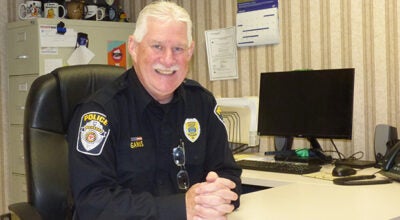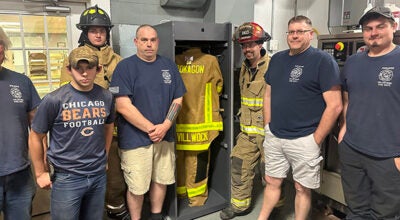Connect Berrien looks to county leaders to make next move
Published 9:47 am Friday, September 28, 2018
NILES — Gathered in the Niles District Library Wednesday night, less than a dozen residents listened to project leaders from Connect Berrien detail a proposal for consolidating Niles’ four bus systems into one.
Pat Brandstatter, the chairman of the Steering Committee, Paul Jewel, principal planner for Nelson/Nygaard and Greg Strangeways, a senior associate with Nelson/Nygaard, helped to lead the discussion.
The proposal is the result of grant and community match-funded study. California-based consultants Nelson/Nygaard were hired to assist and develop a plan. Since then, several public forums have been implemented and data collected with the aim to find out major issues in today’s transportation operations.
With the advent of better transportation, project leaders said more people in the county could get to work, medical appointments and school, to name a few. But the county’s four bus systems: Berrien Bus, Twin Cities Area Transit Authority, Niles Dial-A-Ride Transportation and Buchanan Dial-A-Ride, operate separately from one another and have limited hours, which can make access to these basic needs difficult.
Project officials said their proposal was founded on four goals: providing more convenient transportation, connecting more people to more places and providing an easier to use system that is financially stable.
To address those goals, project leaders proposed offering seven-day service in higher density areas, like Niles, weekday hours would include 5 a.m. to 8 p.m. and 6 a.m. to 8 p.m. Saturday and 7 a.m. to 7 p.m. Sunday. Additionally, the plan includes on-demand service for shorter trips, fixed-service routes, including Niles to Benton Harbor and Niles to South Bend and even Michigan City. The plan also would implement fixed routes for less populated sections of the county on alternating days. The fare would cost $2 for any one-way trip, half off discounts for seniors and disabled people would remain in place and a one-click website and call center for people to get information about the bus system. This plan also includes coverage of the entire county and could see a 56 percent increase in ridership, Strangeways said.
But the next effort will involve figuring out whether residents like the plan enough to figure out a way to fund it.
The current public transportation system costs about $4.3 million to operate annually. A millage implemented in Niles, Benton Harbor and Buchanan raises about $300,000 for that cost.
Due to extended hours proposed, project leaders estimated that the new system would cost about $6.3 million annually to operate. According to Strangeways, the state could cover about 40 percent or $800,000 of that cost, so it would be up to the county to find out how to raise the other $1.2 million. Strangeways did say that they believe the new plan would be able to make use of the current bus fleets and facilities and that no new garages or buses would need to be purchased to make the proposal a reality.
Judy Corak, of Eau Claire, was among those who attended the meeting Wednesday night. Corak’s daughter, Mindy, has a rare disability called Shprintzen syndrome, which causes seizures and tremors and because of this she cannot drive.
Wanting to give their grown daughter independence, Corak said Mindy used to be able to take the bus to work and doctor’s appointments, but that stopped when the bus schedule first began cutting back hours about 10 years ago. Corak now has to leave work to drive Mindy where she needs to go, including regular medical appointments in St. Joseph.
Reflecting on what she had heard at the library, Corak said she thought the plan sounded like a good idea.
“It would give her [Mindy] freedom,” Corak said. “How long can I transport her? I don’t know. Right now, I take her a lot of places. We are looking at the future. We want her to be as independent as possible.”
As to what happens next, Brandstatter said it would be up to county leaders to decide whether or not they wanted to move forward with the proposal and come up with options for funding the project. He encouraged local constituents to reach out to their city leaders and ask for them to move forward on the project.
“We cannot afford not to do this,” he said.






